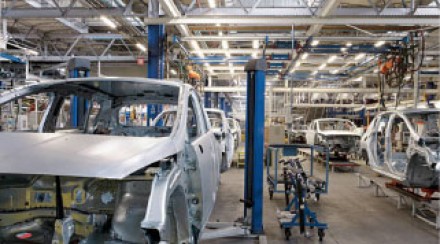Escalating Fatalities Correlation with Advancing Automated Technology
How serious is the problem of defective automated technology? Currently, no one knows with certainty. The National Safety Council reports there is no research study reporting on the number of automotive fatalities caused by driver assistance technologies. See, “Undercounted is Underinvested: How Incomplete Crash Reports Impact Efforts to Save Lives,” published by the National Safety Council, page 12. Neither Texas, nor any other state in the union, keeps a tally of these incidents.
Meanwhile, in the same safety report, the NSC acknowledges that as automotive automation increases, so does the number of fatal motor vehicle crashes, with 2016 considered “the deadliest year on the nation’s roads since 2007.” Our country saw “the most dramatic two-year escalation in traffic fatalities since 1964,” when fatality statistics between 2014 and 2016 were compared. NSC Report, page 6.
Wide Variety of Motor Vehicle Automated Technology Devices
The National Highway Traffic Safety Administration (NHTSA) defines an automotive defect as “any defect in performance, construction, a component, or material of a motor vehicle or motor vehicle equipment.” Safety defects involve a problem with motor vehicle equipment that either (1) poses a risk to motor vehicle safety or (2) exists in a group of vehicles of the same design or manufacture, or items of equipment of the same type of manufacture.
Automated technology defects in a motor vehicle may include the following components, designed in some way to substitute for the human driver:
- Vehicle-to-Vehicle (V2) Communication Systems allow vehicles to exchange information about surrounding vehicles’ speed and positions via WiFi communication;
- Automatic Emergency Braking (AEB) Systems are designed to automatically apply the brakes if the driver does not promptly respond to its warnings of an imminent forward crash;
- Forward Collision Warning (FCW) Systems warns the driver of an imminent forward crash as it monitors the vehicle’s speed as well as the speed and distance of the surrounding road traffic;
- Lane Departure Warning (LDW) Systems warn the driver if the system determines that the vehicle is moving out of its lane without a turn signal or unintentionally drifting out of the lane;
- Lane Keeping Support (LKS) Systems corrects the steering, braking, or accelerating of the vehicle if its sensors determine that the car is moving out of its lane of travel;
- Pedestrian Automatic Emergency (PAEB) Systems applies the brakes of the vehicle automatically if sensors determine that there are pedestrians in the forward path of the vehicle.
For a list of current makes and models offering various safety automated components, check out the July 2018 roster compiled by Consumer Reports.
Getting Justice after Crash Caused by Automated Technology Defect
Product defects involving automated technology in motor vehicles can form the basis of personal injury claims based upon state product liability laws. A wide range of technological errors and computerized glitches can result in a serious crash, with the product’s manufacturer as well as the car maker, distributor, and seller potentially liable for the victim’s damages.
Wigington Rumley Dunn & Blair LLP has achieved multi-million dollar jury verdicts and substantial settlements based upon car crashes and motor vehicle accidents that were the result of defective design or defective products.
We have established a record of success in fighting for justice against those responsible for fatal crashes due to errors or flaws in automotive engineering and stand ready to advocate for those who will be victims of the automotive industry’s “road to full automation.”
For details, see our record of case results in our Case Summaries and our Verdicts and Settlements.
For more information regarding Automated Technology Defects, please review our settlement history and read summaries of some of our past cases.

